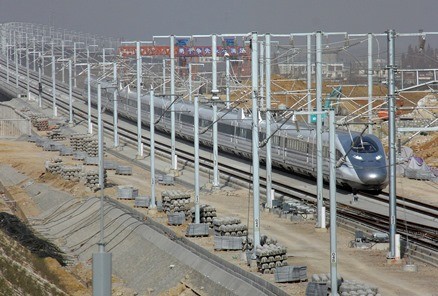China is leading the world in high-speed rail construction and technology despite being a latecomer, a professor at Xinan Jiaotong University said during a recent interview with China Daily.
Zhai Wanming, a chair professor at Xinan Jiaotong University and a member of the Chinese Academy of Sciences, told China Daily that the country's high-speed rail technology is better than other countries'.
He added that the surface of Chinese rails is smooth, which is one of the areas in which China excels. He cited the smooth rails on the Beijing-Shanghai high-speed train, enabling the train to reach speed of up to 380 kilometers an hour.
The professor said that in terms of comfort, China's high-speed trains have a good track record since every train passes strict tests to ensure maximum comfort for passengers. He added that in terms of safety, Chinese trains also perform well.
Other than these, the professor said, China's high-speed railways are more affordable and cost less, which is acknowledged globally.
China has also built railways in various geographical terrains or more than 16,000 kilometers of high-speed railways across mountains, plains, high plateaus and deserts, an advantage that Chinese engineers and workers have over their competitors.
The professor said that although Japan's Shinkansen technology can prevent damage to high-speed railways during earthquakes, including environmental safety and noise control, China can catch up and develop its own technology that would include advanced monitoring and early warning systems as well as quake-resistant technology.
China has gained enough experience in terms of environmental protection in building the railway that connects Lhasa in Tibet with Qinghai Province, the professor added.



























